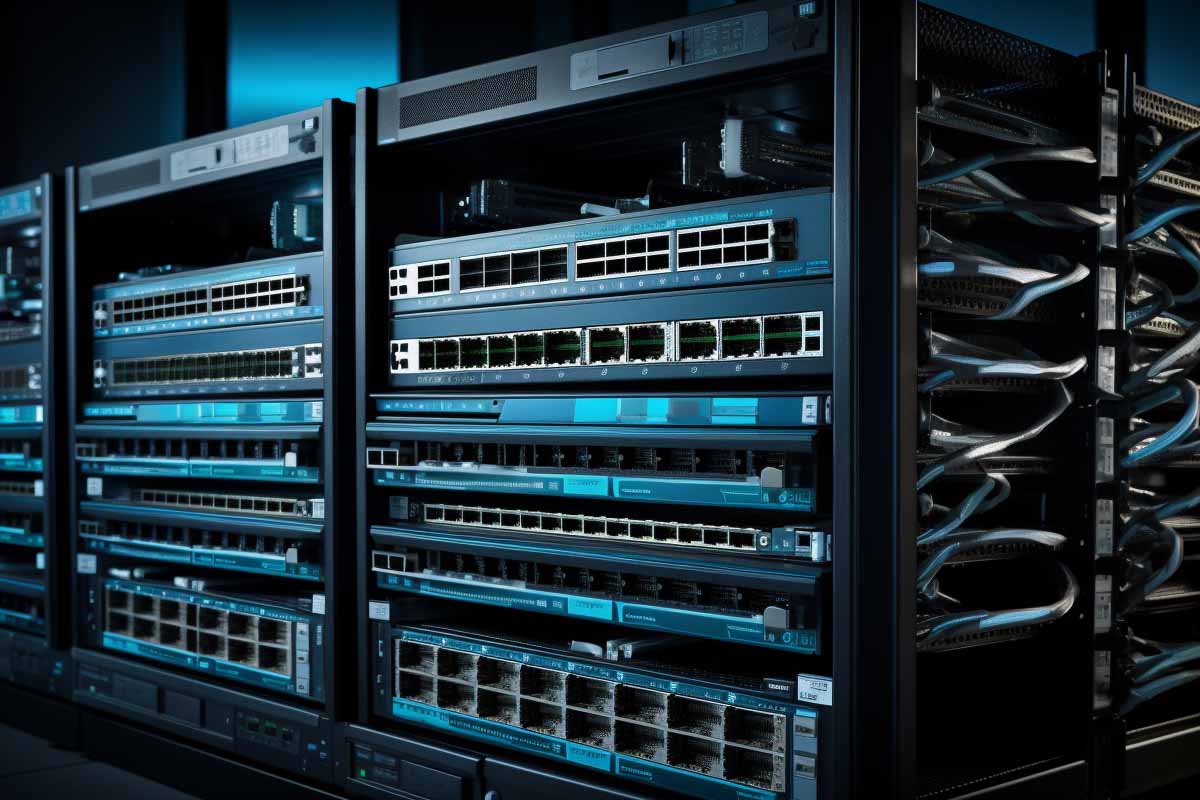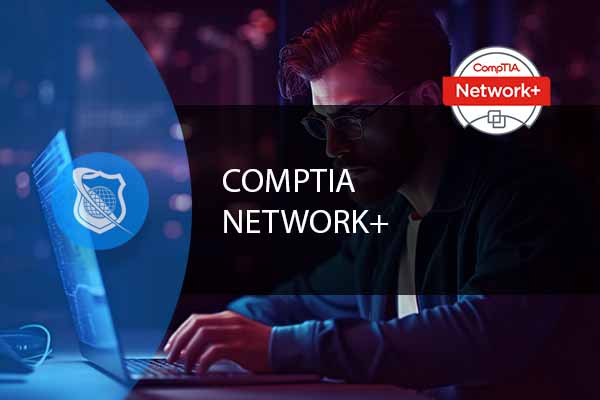What Is an Artificial Neural Network (ANN)?
Definition: Artificial Neural Network (ANN)An Artificial Neural Network (ANN) is a computational model inspired by the networks of biological neurons in the brain. It is a cornerstone technology in the

Cisco’s Enhanced Interior Gateway Routing Protocol (EIGRP) is a proprietary routing protocol developed by Cisco Systems. EIGRP falls into the category of advanced distance-vector routing protocols, although it incorporates features that make it more like a hybrid protocol. EIGRP is designed to efficiently handle routing within an autonomous system (AS) and is commonly used in enterprise networks.
Become a pro in advanced routing and services with our Cisco 300-410 ENARSI course. Enroll now and get certified!
EIGRP operates within a single autonomous system and is not designed to be used as an inter-domain routing protocol like BGP. It’s commonly used in enterprise networks due to its efficient convergence, scalability, and support for various IP features.
However, it’s important to note that EIGRP is a Cisco-proprietary protocol, which means it generally only works on Cisco routers and devices. If you’re working in a multi-vendor environment, you might need to consider using standard protocols like OSPF or BGP for interoperability.

Learn concrete vendor neutral Network fundamentals in our comprehensive CompTIA Network+ traning course.
Configuring Cisco’s Enhanced Interior Gateway Routing Protocol (EIGRP) involves a series of steps that need to be executed on the Cisco router. EIGRP is a Cisco-proprietary routing protocol used for routing within an autonomous system (AS). Here’s a basic outline of the steps required to configure EIGRP on a Cisco router:
Enable EIGRP and Define an Autonomous System (AS):
router eigrp <AS_number>
Replace <AS_number> with the autonomous system number you want to use. This number helps differentiate EIGRP instances from each other.
Define Networks to Advertise: Specify the networks you want EIGRP to advertise. This is done using the network command followed by the network address and wildcard mask.
network <network_address> <wildcard_mask>
Replace <network_address> with the network you want to advertise and <wildcard_mask> with the wildcard mask that corresponds to that network.
Optional: Adjust Metrics and Other Parameters: You can adjust various EIGRP parameters, such as bandwidth, delay, reliability, and load. These parameters affect the metric calculation.
metric weights 0 1 0 1 0 0
The above command sets bandwidth and delay as the only non-default metric components.
Optional: Filter Routes: You can use distribute-lists or access-lists to filter which routes are advertised or learned. For example, you might use distribute-list to filter routes based on specific criteria.
distribute-list <access-list-name> <strong>out</strong> <<strong>interface</strong>>
View EIGRP Status and Neighbors: To view EIGRP status and neighbor information, use the following commands:
<strong>show</strong> ip eigrp neighbors<strong>show</strong> ip eigrp topology
Save Configuration Changes: After configuring EIGRP, remember to save your configuration changes to ensure they persist after a router restart.
copy running-config startup-config
Keep in mind that this is just a basic outline of the configuration process. The specific commands you use might vary based on your network’s requirements and the Cisco IOS version you’re using. Always refer to the official Cisco documentation or relevant resources for the most accurate and up-to-date information. Additionally, the network topology, IP addressing scheme, and other factors will influence the exact configuration you need to implement.
Cisco EIGRP, or Enhanced Interior Gateway Routing Protocol, is a proprietary routing protocol developed by Cisco Systems. It stands out from other protocols due to its hybrid nature, combining distance-vector and link-state characteristics. EIGRP uses a metric based on bandwidth, delay, reliability, and load to make routing decisions, ensuring efficient path selection while also providing fast convergence through the Diffusing Update Algorithm (DUAL).
EIGRP achieves fast convergence through the Diffusing Update Algorithm (DUAL). When a topology change occurs, routers share information about their neighbors and their routes. DUAL then calculates loop-free paths and updates routing tables accordingly. This distributed computation approach minimizes convergence time, making EIGRP suitable for networks where rapid response to changes is crucial.
EIGRP’s composite metric combines multiple factors like bandwidth, delay, reliability, and load. This provides a more comprehensive view of network conditions compared to other protocols that often rely solely on hop count. The composite metric enables EIGRP to choose the best path considering both bandwidth and delay, which can lead to more efficient utilization of available resources.
EIGRP neighbor relationships are formed between directly connected routers in the same autonomous system (AS). Routers exchange hello packets to establish and maintain these relationships. Once established, neighbors exchange routing updates, helping each router build a complete picture of the network. This neighbor-based approach enhances scalability and efficient exchange of routing information.
Network administrators often choose EIGRP for enterprise networks where Cisco devices dominate the infrastructure. EIGRP’s efficient convergence, scalability, and support for advanced features like unequal-cost load balancing make it suitable for these environments. However, in multi-vendor networks or in cases where inter-domain routing is needed, protocols like OSPF (Open Shortest Path First) or BGP (Border Gateway Protocol) might be preferred for their standardized nature and broader compatibility.
Lorem ipsum dolor sit amet, consectetur adipiscing elit. Ut elit tellus, luctus nec ullamcorper mattis, pulvinar dapibus leo.
$49.99 Original price was: $49.99.$16.99Current price is: $16.99. / month with a 10-day free trial
Definition: Artificial Neural Network (ANN)An Artificial Neural Network (ANN) is a computational model inspired by the networks of biological neurons in the brain. It is a cornerstone technology in the
Definition: Technical DebtTechnical debt refers to the concept in software development where choosing an easier, quicker, or more cost-effective solution now can lead to additional rework later on. It accumulates
Definition: Integer OverflowInteger overflow occurs when an arithmetic operation attempts to create a numeric value that exceeds the range that can be represented with a given number of bits. For
Definition: Quiescent ConsistencyQuiescent consistency is a weak consistency model used in the context of distributed systems and concurrent programming to describe a system’s state when it is not undergoing any
Definition: Application Service Agreement (ASA)An Application Service Agreement (ASA) is a contractual framework between a service provider and a client, specifying the terms under which application services, including development, maintenance,
Definition: Python GeventPython Gevent is a coroutine-based Python networking library that uses greenlets to provide a high-level synchronous API on top of the libev event loop. It is designed to
Definition: Message DigestA message digest is a cryptographic hash function output that provides a fixed-size string of characters from an input of any size. It serves as a digital fingerprint
Definition: Hybrid CryptosystemA hybrid cryptosystem is a cryptographic system that combines the efficiency of symmetric encryption with the security advantages of asymmetric encryption. It utilizes the best features of both
Definition: Hypervisor-Level AttackA hypervisor-level attack targets the hypervisor, also known as the virtual machine monitor (VMM), a crucial layer of software that enables virtualization in computing environments. This type of
Definition: Pretty Good PrivacyPretty Good Privacy (PGP) is a data encryption and decryption program that provides cryptographic privacy and authentication for data communication. PGP is used for securing the transmission
Definition: Disk ArrayA disk array is a storage system consisting of multiple disk drives, which are organized and managed as a single entity to improve performance, increase data redundancy, and
Definition: Data IndexA data index is a data structure that improves the speed of data retrieval operations on a database table at the cost of additional writes and storage space
ENDING THIS WEEKEND: Train for LIFE at our lowest price. Buy once and never have to pay for IT Training Again.

Get ready for the updated 220-1201 & 220-1202 exams with our brand-new CompTIA A+ training—designed to help you pass with confidence and start your IT career strong. Access this course and over 2,900 hours of expert-led IT training when you sign up for any of our All-Access Passes. Don’t miss out—enroll now and start learning today!
One Response
Great article, very informative!